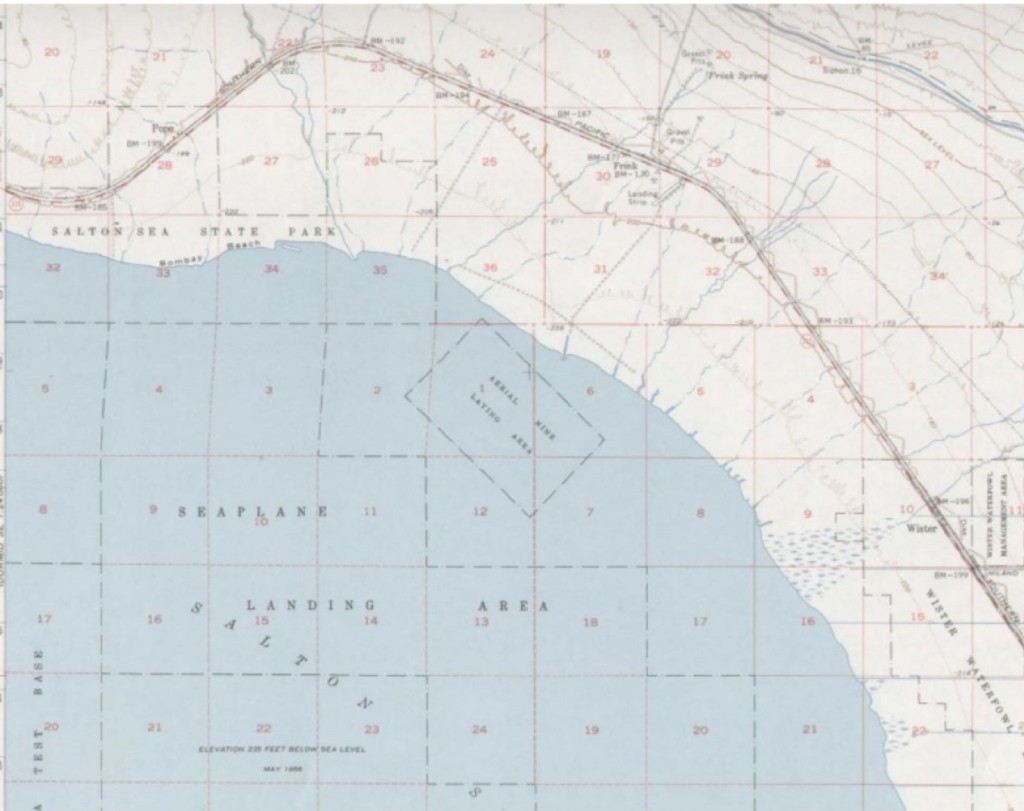Salton Sea et al
Posted on | January 15, 2010 | 1 Comment
For those who have asked about the impact of of this week’s ruling by Sacramento Superior Court Judge Roland Candee as it affects the Salton Sea restoration deal incorporated in the 2003 Quantification Settlement Agreement and Joint Powers Authority funding agreement (QSA JPA), here are some relevant excerpts from the decision. Copious numbered references have been struck for coherence and eyeball-busting acronyms have been decoded. The full text of the decision is available here.
These edited excerpts come from Sections 6 through 9, pages 33 through 43 of the decision.
“Dealing with the Salton Sea appears to the Court to have been the single most significant environmental issue faced in the QSA process. The Salton Sea is California’s largest lake, located north of the Mexican border at the northern end of the Imperial Irrigation District service area and the southern end of Coachella Valley Water District’s service area.
“It is in a large depression about 230 feet below sea level. The modern Salton Sea was accidentally created when the Colorado River breached a headgate and flowed unimpeded into the Salton Sink for almost two years, starting in 1905.
“The Salton Sea has no significant natural inflow, relying almost entirely on agricultural drain flow from Imperial Irrigation District and service areas for its continued existence. Changes in that inflow, whether increases or decreases, affect the condition of the Salton Sea. As evaporation over the years left behind the salt from the drain water, the Salton Sea became more and more salty, and increasingly toxic to wildlife.
“The Audubon Society labeled the Salton Sea an “environmental Chernobyl” in 1999. For example, in 1996 botulism at the Salton Sea killed about 10% of the population of western white pelicans.
“The Environmental Impact Review and Environmental Impact Statement prepared for the Imperial Irrigation District Transfer Project and other literature represented that the Salton Sea would continue to decline without a restoration project … ‘At current rates of salt loading of 4 million tons of salts per year, the Salton Sea will be unsuitable for fish and other wildlife in 15 years,’ wrote Dr. Timothy Krantz in 1999.
“Restoration of the Salton Sea was studied for years prior to the approval of the QSA and related agreements. Studies addressed the increasing salinity and lowering elevation in an effort to stabilize a habitat for fish and wildlife.
“Congress passed the Salton Sea Reclamation Act of 1998, which instructed the Secretary to perform certain ‘feasibility studies and cost analyses’ for stabilizing the elevation and salinity of the Salton Sea.
“The Secretary was to establish ‘options he deems economically feasible and cost effective,’ based on a set of operating assumptions. Among those assumptions was to ‘account for transfers of water out of the Salton Sea Basin . . . which could be 800,000 acre-feet or less per year.’
“In 2003, the California Legislature established the Salton Sea Restoration Fund to be used for restoration purposes. The primary transfer beneficiaries Imperial Irrigation District, San Diego County Water Authority and Coachella Water District provided an initial $30 million for the Restoration Fund. The State legislation insulated those agencies from any responsibility, obligation or liability for restoration, regardless of what the State ultimately decided to do.
“The impacts of the water transfers are clearly a subject of the QSA. The Court notes that ‘restoration’ may differ from ‘mitigation,’ and that there are pending disputes regarding the QSA and QSA transfer impacts, and sufficiency of mitigation. The Court does not reach, nor make any finding, regarding these issues in this Statement of Decision. (Bold added)
… “In the days between October 2, 2003, and before the October 12, 2003 deadline, in an apparent attempt to make the State’s commitment to pick up any environmental mitigation cost shortfall more certain than had been provided by the California legislature …, the Quantification Settlement Agreement Joint Powers Authority … language was successfully negotiated by the non-State parties to expressly provide that the ‘State obligation is an unconditional contractual obligation of the State of California, and such obligation is not conditioned upon an appropriation by the Legislature, nor shall the event of non-appropriation be a defense.’
“Everyone negotiating the QSA JPA Agreement would have reasonably understood that now the State itself was purporting to unconditionally commit to pick up the entire tab for mitigation costs exceeding the capped contribution of the other QSA parties, notwithstanding the amount of those costs — even if they ultimately amounted to millions or billions of dollars – and notwithstanding the State’s budget, appropriations, or other controls over expenditures.”
… “The Court is not called upon nor does it address whether the QSA legislation is unconstitutional. The Court does conclude, however, that the above-cited language puts a more extensive obligation on the State than imposed by the QSA legislation. This, coupled with the non-State parties express confirmation of their intent and understanding that the State obligation was an unconditional contractual obligation of the State of California not dependent on any further State action, compels the Court to declare the QSA JPA Agreement invalid.” (bold added.)
Comments
One Response to “Salton Sea et al”
Leave a Reply




January 15th, 2010 @ 2:17 pm
[…] of press reactions, go to Aquafornia. Those interested in the Salton Sea aspects of the decision, click here for an edited segment of Judge Candee‘s […]